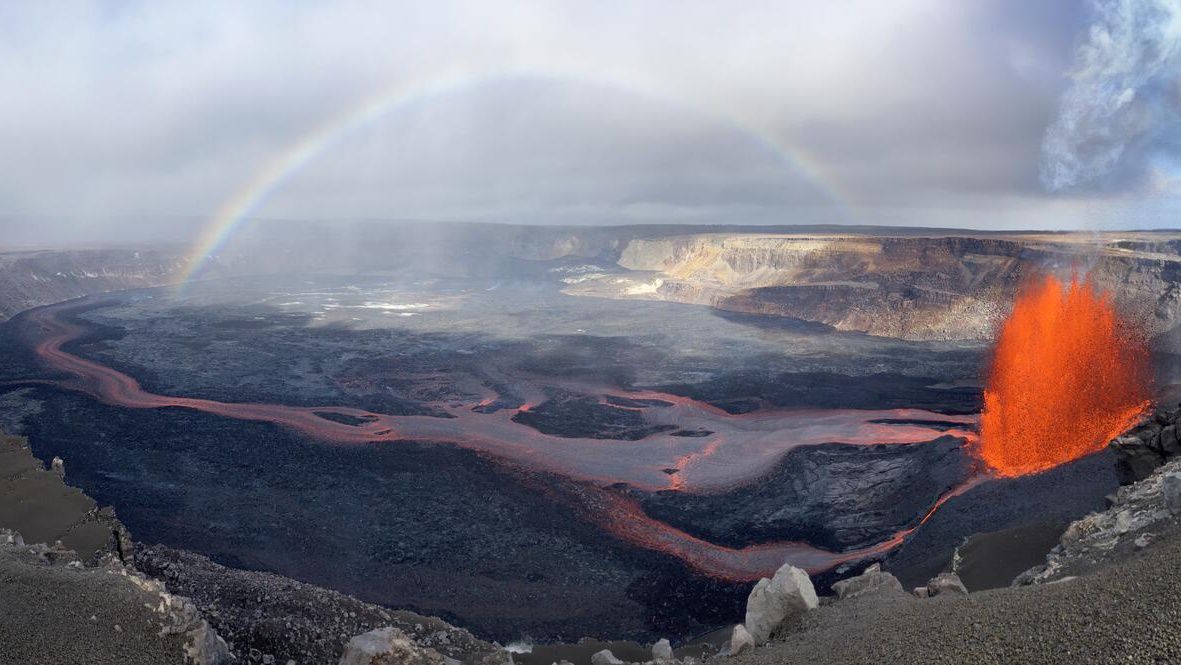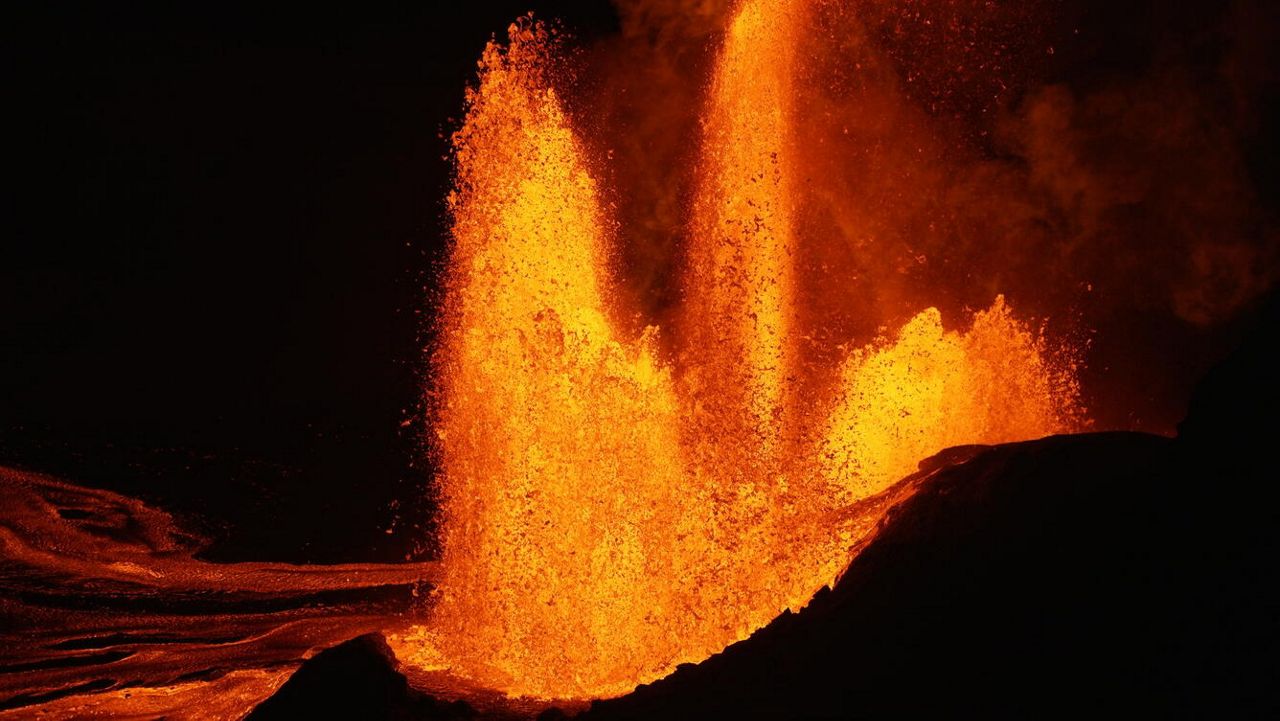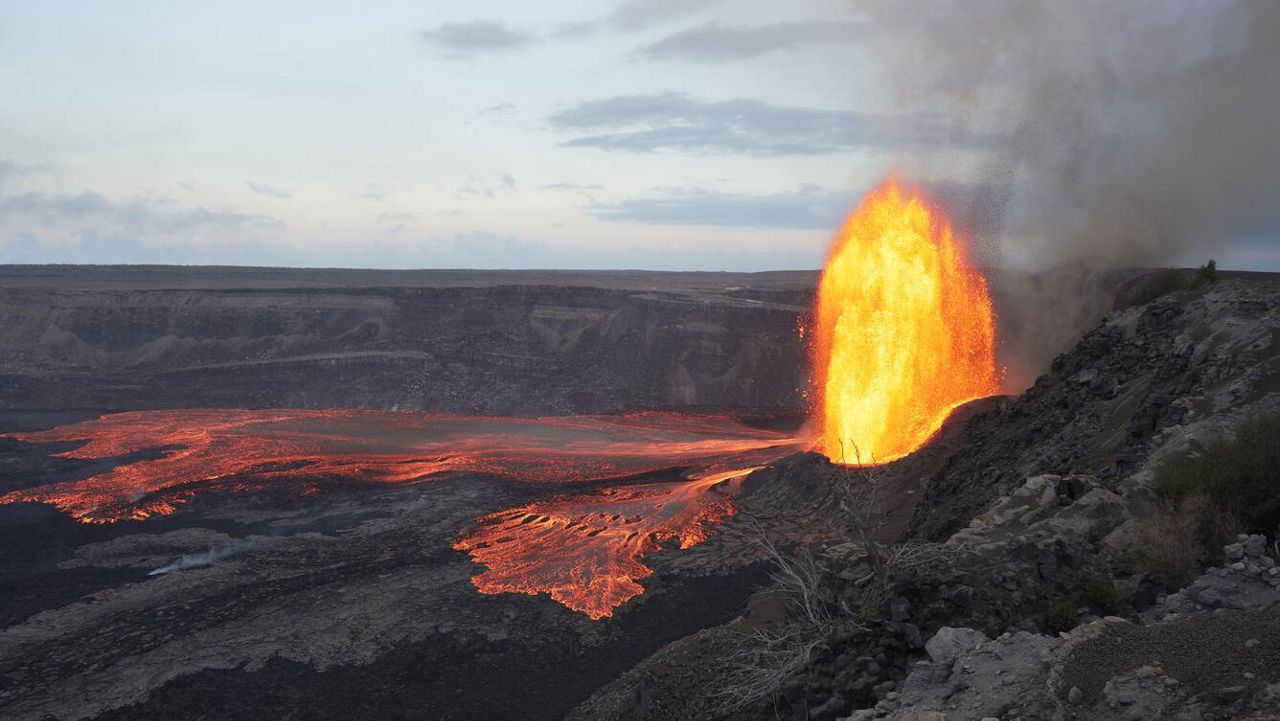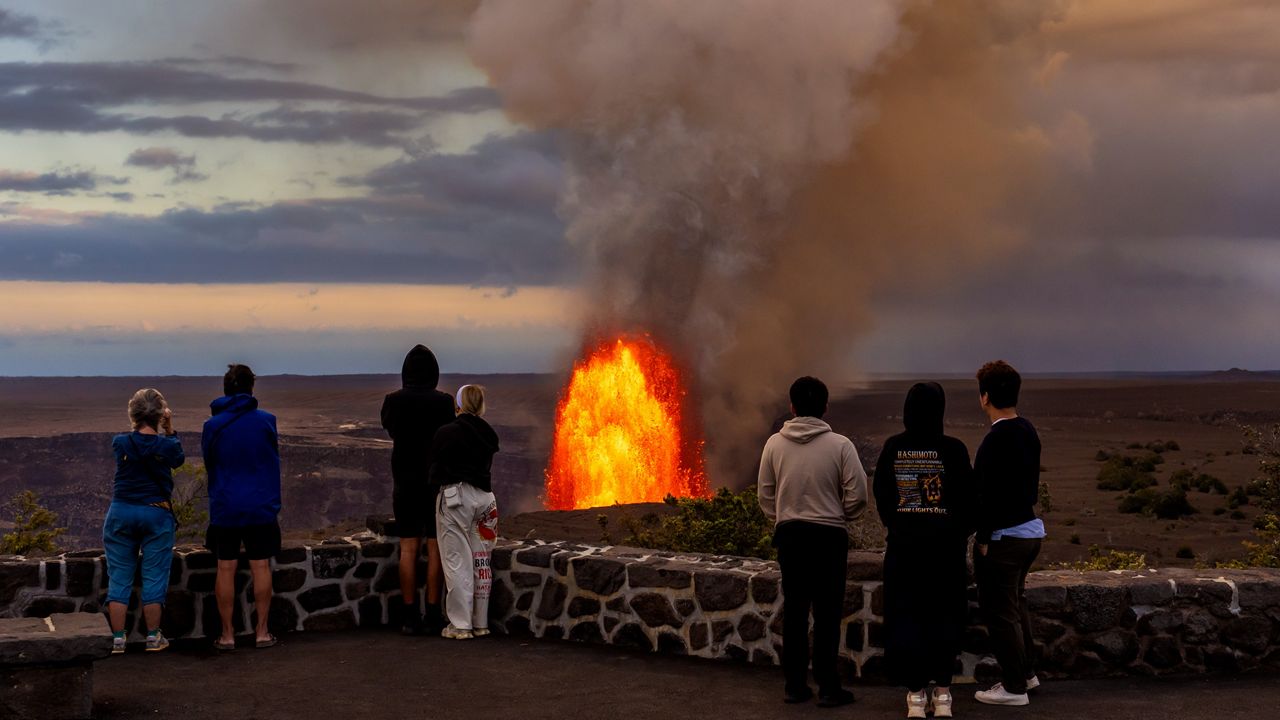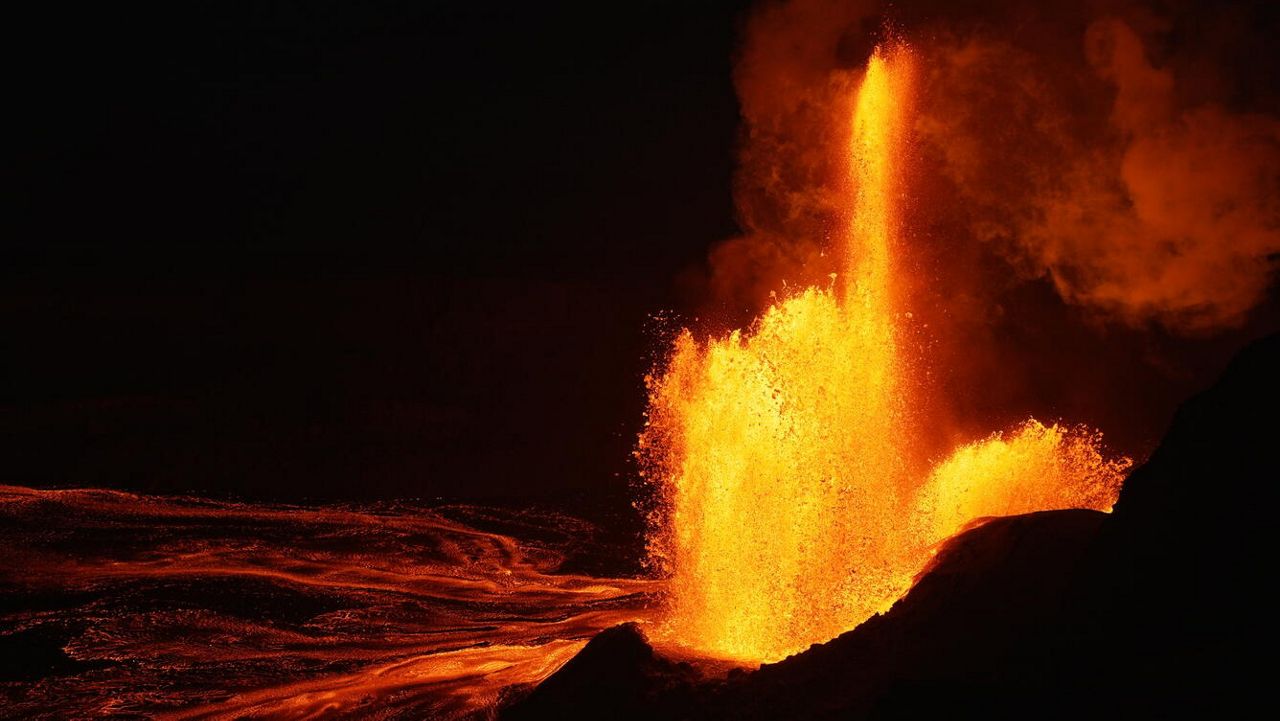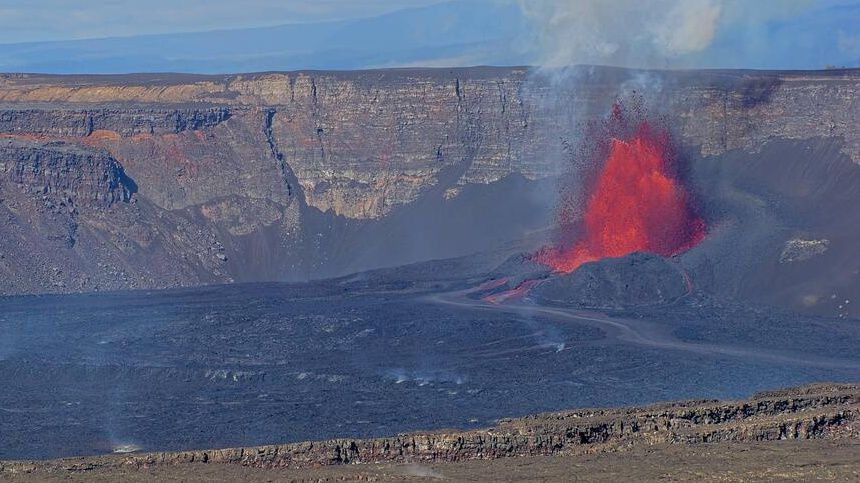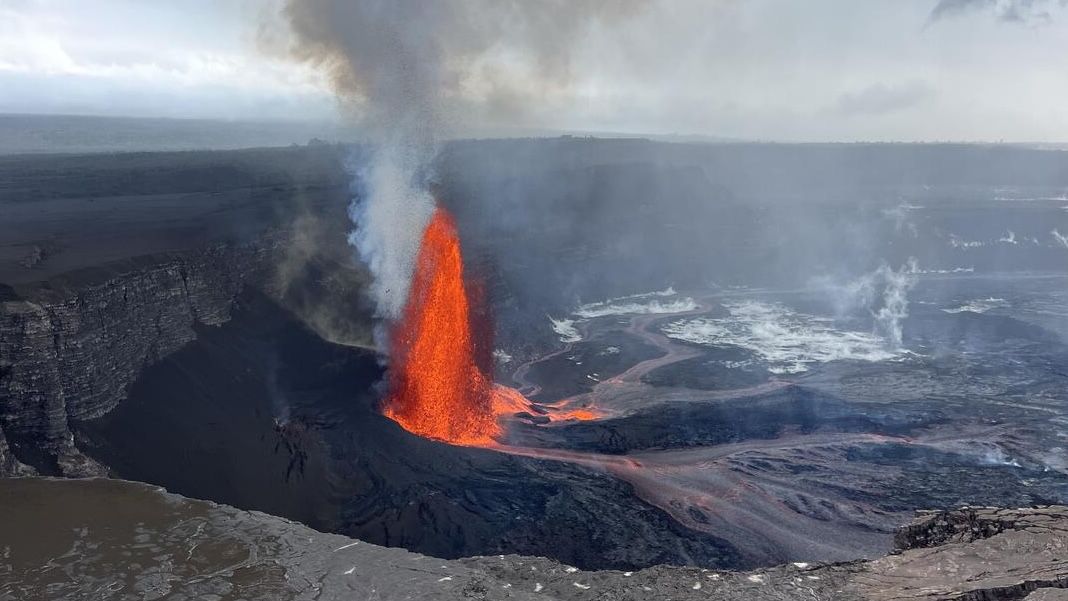The Hawaiian Volcano Observatory reported Kilauea volcano began the main fountaining event of episode 21 on Sunday at 12:45 p.m. The eruption paused later that day at 8:34 p.m., after about 8 hours of sustained fountaining.
The current eruption, which began on Dec. 23, 2024, has already produced 20 episodes of lava fountaining, each separated by brief pauses in activity. These spectacular bursts of lava originate from two vents within the Halemaʻumaʻu crater: the north vent and the south vent.
During episode 21, lava fountains and flows erupted primarily from the north vent, which obscured the south vent. Fountains from the north vent reached heights of more than 500 feet. This episode’s lava flows inundated the near vent and extended more than half a mile along the north edge of Halemaʻumaʻu crater.
Before the sustained fountain phase of episode 21, there were several small fountain events — at 4:30 a.m., 5:20 a.m., and 8 a.m. — after which the HVO observed many small fountains. This precursory activity included gas-pistoning events in the north vent, cycling from dome fountaining and ponding of lava to drainbacks.
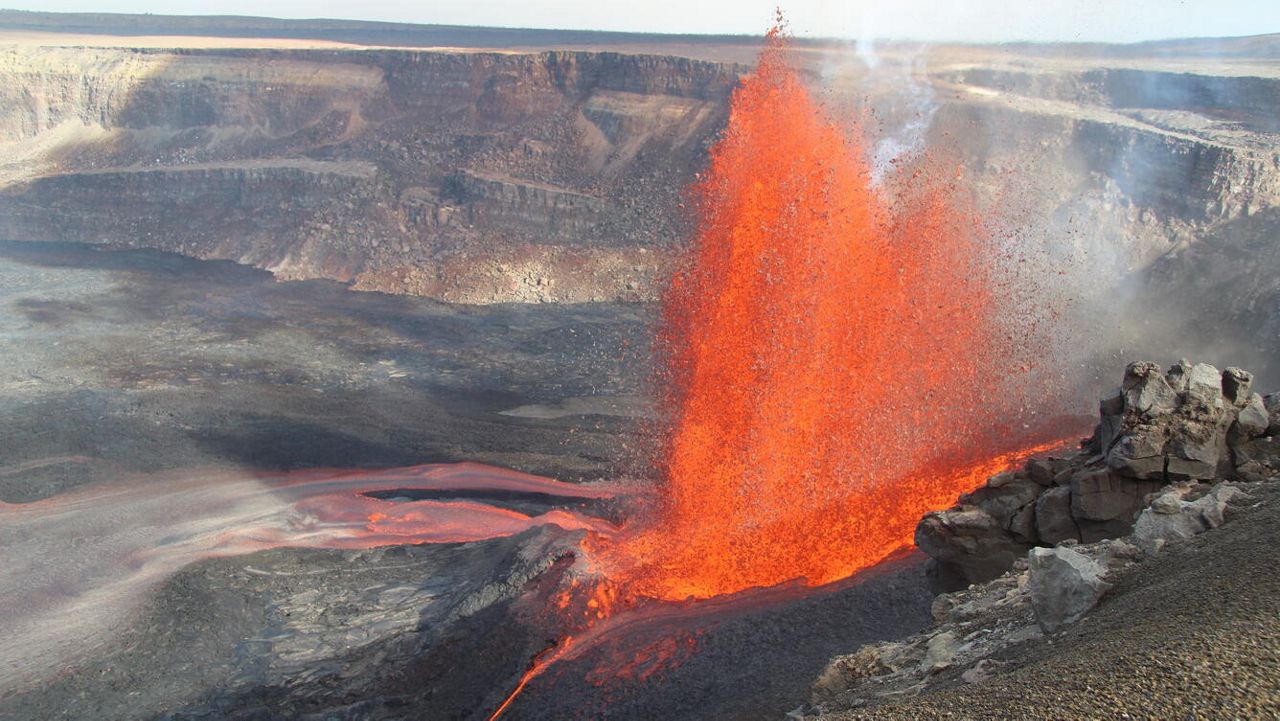
The U.S. Geological Survey-operated agency warned that emissions of volcanic gas — a mix of water vapor, carbon dioxide, and sulfur dioxide — may be elevated. As sulfur dioxide is released from the eruption, it will react in the atmosphere to create the visible haze known as vog.
Also, the Hawaiian Volcano Observatory noted visitors to Hawaii Volcanoes National Park and residents of nearby areas should watch out for Pele’s hair and other small fragments of volcanic glass and tephra carried in the plume, as they were during previous episodes.


